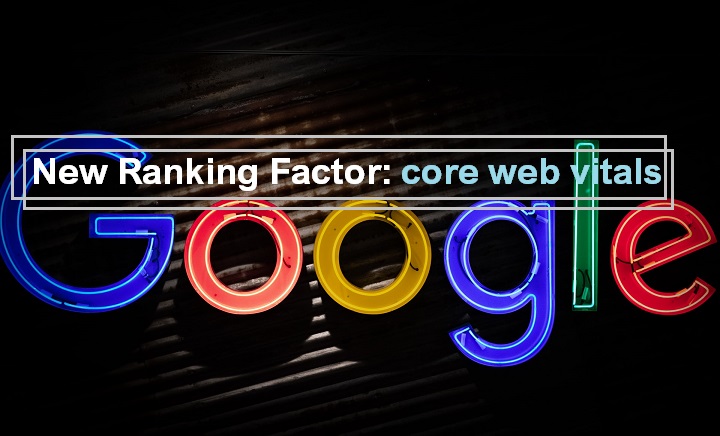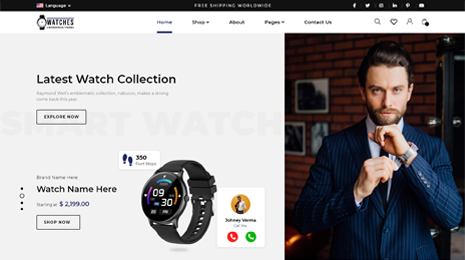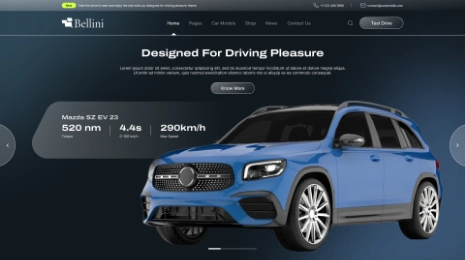Core Web Vitals – The New Performance Metrics
Core Web Vitals are a new set of assessment parameters or metrics that are useful in assessing and highlighting the aspects of website development that affect the overall user experience of the site. These real-world experience metrics by Google answers questions such as: How fast does your web page load? How speedy the interaction is? How visually stable is it? etc. Very soon, Google is going to include Core Web Vitals ranking factors as a part of Page Experience Update.

So basically, the overall page experience will be a hotchpotch of some of the other factors that Google considers crucial for the user experience that includes:
- Mobile-friendly nature of the page
- HTTPS
- Absence (preferred) or minimum interstitial pop-ups
- Secure browsing
The Core Web Vitals will be considered as a super important part.
It is a common practice that anything that is newly introduced is given more importance whether it is the case of gadgets or technology. Similarly, Core Web Vitals will contribute as the biggest part of your web page experience score. However, there are also performance metrics for these Web Vitals based on the three outcomes:
- Pass(Good)
- Needs to be improved
- Fail(Poor)
As for now, the current three Core Web Vitals are:
1. Largest Contentful paint (LCP)
Basically, LCP is the time taken from the instance of clicking on the website link to the instance when most of the website content becomes visible to the visitor. In simple words, it is the actual time taken for loading the page when a user practically uses the site. LCP should not be considered the same as the other page speed measurements as LCP focuses on the ability of your page to interact. If your page hits LCP with 2.5 seconds, it is considered good. Anything around 5 seconds or above that is considered poor. For improving your page’s LCP, you need to go a step further. It is not that easy but it is definitely worth it.
Here are a few ways you can try to improve the LCP of your site.
- Try removing any unnecessary third-party scripts: according to a study, it has been found that a third-party script can slow down your page speed by 34 ms.
- Upgrade to a better web host: better hosting improves the load time and results in faster loading sites.
- Remove large and bulky page elements: when you analyze the things using Google PageSpeed Insights, it will tell you about the element that is causing your page to load at a slower speed if there is any.
- Minify CSS: delay in LCP times can also be a result of bulky CSS.
2. First Input Delay (FIP)
FID measures the time a user takes for actually interacting with your web page. Now don’t get confused with the word ‘interaction’. Here, interaction simply means:
- Clicking or choosing an option from the given menu on the page.
- Clicking on any link given on the site.
- Filling in the details such as email id in the field provided on the site and more.
Google gives plenty of importance to FID as it sees how much time or how practical users take to interact with your website.
Below are some ways in using which you can improve the FID score:
- By Deferring JavaScript: Interaction becomes impossible when a page is still loading its JS. so deferring JS may do the trick for you.
- By using Browser-cache: it helps the user’s browser to blast through the JS and load page faster.
3. Cumulative Layout Shift (CLS)
It is all about the visual stability of your page. Simply speaking, if your page has elements that move around while the page loads, then it is said to have high CLS which is absolutely not desirable. The elements on your site should be very stable even while loading.
You can try the below-mentioned things for minimizing the CLS:
- For any media, use set size attribute dimensions: This will help the user’s browser to analyze the space those media elements will take up.
- Have a reserved space for advertisements: If not done so, they may appear anywhere on your page and may push your content.
- Adding new UI elements: Adding new UI elements below the fold will not push the content and will make it stay the way as the user expects.
We have all themes available on our website at amazing discounts. Check out for your favourite WP themes or buy WP theme bundle at just $99.












